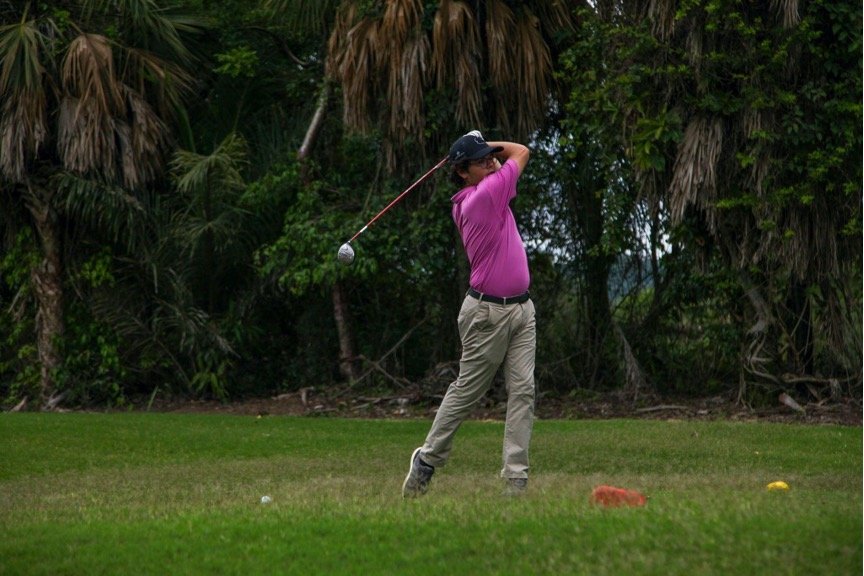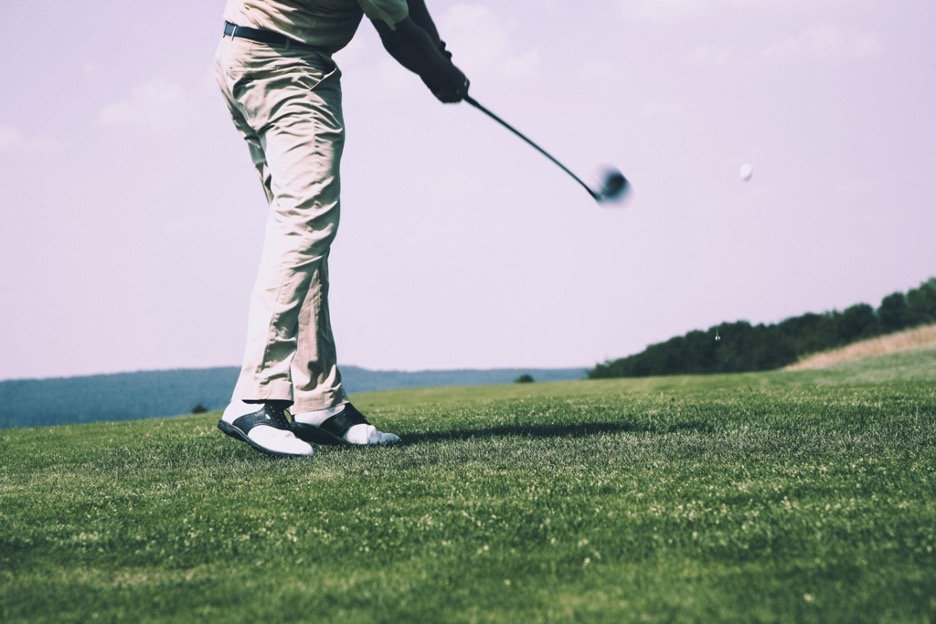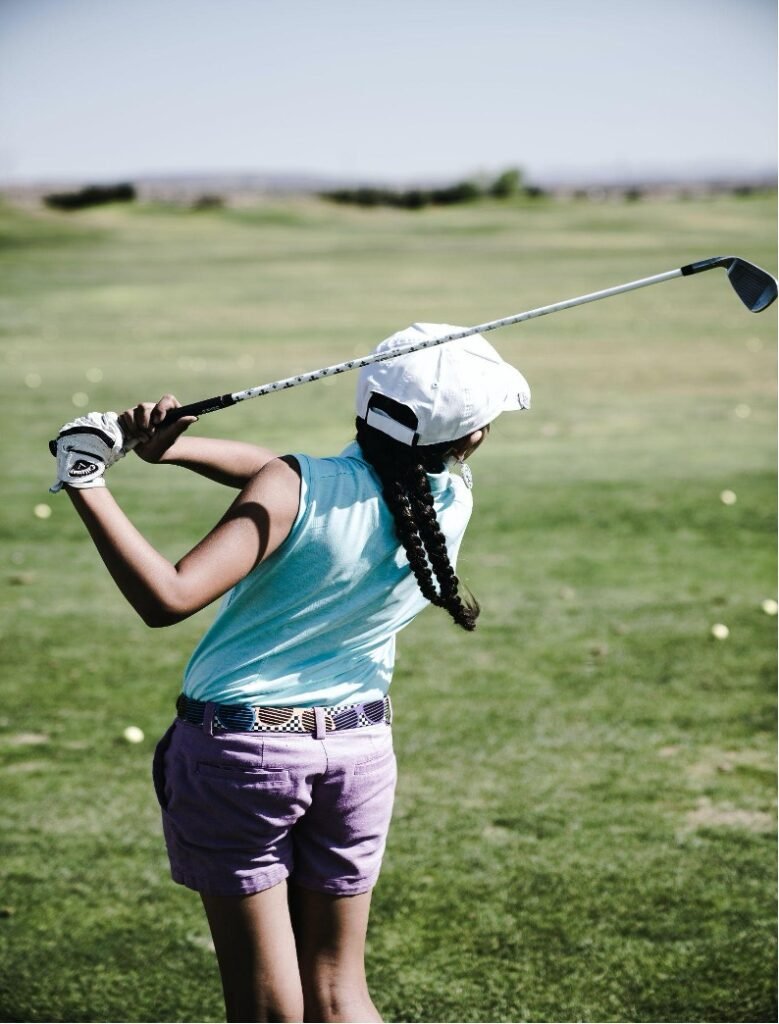Golf Driving Technique

A golfer swinging | @sebastianangarita
Golfers need to become proficient in a variety of skills to be able to have a good gameplay and the art of driving a golf ball is the most important of these abilities. This article will dissect the essential components of a successful driving technique. Everything from grip and posture to backswing and downswing mechanics will be explored. You will also learn how to practice your driving so that you can drive like a pro.
Understanding the basics

A golf ball rolling in the air | @markusspiske
Golf driving is a technique that determines a golfer’s success on the field and as such, must be taken with all seriousness. Professional golfers and beginners all aim for perfection on the course but perfect driving techniques will make you stand out. While it is exciting for you to see your golf ball roll in the air as it makes a round; a well-executed drive determines the accuracy of that roll. Here, you will learn the specific tricks and tips you need to hone this skill on the course.

A golfer with full body movement | @jopwell
It is crucial to develop a strong foundation with the right grip and stance before executing the magnificent club swing. The foundation for a steady and controlled drive is laid by the player’s stance, which involves placing their feet, chest and grip in certain positions. The idea is to concentrate on striking with a comfortable posture with feet shoulder-width apart and using a neutral grip that permits flexibility. This basic arrangement promotes equilibrium and guarantees a more organic transition into the swing.

A golf ball rolling in the air | @markusspiske
A good drive is in reality about controlled bodily movement. The kinetic chain builds up starting from the hips and moving through the body, shoulders, arms, and club. A good drive is emphasized on well-calculated movements starting from the stance. Maintaining a balanced and controlled swing requires maintaining an appropriate distribution of weight. Potential energy is created as the club is brought back because the weight somewhat moves to the back foot. This energy is transferred to the front foot during the downswing, which causes the ball to go forward. A balanced weight transfer should be used; excessive swaying or tilting might damage the swing’s structural integrity
Gaining mastery on Stance and Ball positioning
Getting a good golf drive starts with a good stance. The stance in a golf game is simply the way your chest and feet are positioned before you strike the ball. Here, some tips on how you get a good stance on the golf course will be highlighted.
Positioning the Feet
The feet placement is the foundation of a strong golf stance. The ideal foot position is shoulder-width apart, which offers a firm base. To promote a natural alignment for the swing, the feet should be parallel to the target line.
Distribution of Weights
Finding the ideal weight distribution is essential to keeping your balance during the swing. A golfer’s stance should be dynamic and athletic, with a little inclination towards the balls of their feet. To produce a strong, controlled swing, the front and rear feet must be balanced properly.
Posture and Knee Flex
The stance becomes more flexible and adaptive when the knees are slightly bent. The spine shouldn’t be too rounded or arched; instead, it should remain neutral. An athletic stance is enhanced by a small forward tilt from the hips, which makes it easier to rotate well throughout the swing.
Tips
- Practice with consistency and attention which leads to mastery.
- Make use of feedback systems to adjust your position. A review from fellow players, video analysis of your swing, and even the sensation of your swing may all tell you important information about how effective your stance is.
- Mastering posture requires mental attention, which is a useful technique. Using visualization techniques, golfers may improve muscle memory and increase their confidence on the course by mentally practicing their ideal stance and swing.
Ball Positioning

A golf ball in position | @kindelmedia
A golfers ability to position the golf ball against the club and stance in the best possible way is essential to defining each shot’s trajectory, distance, and accuracy.
The mechanics of the swing are directly influenced by the golf ball’s location in respect to the stance. A well-planned ball location can help or hurt the club’s trajectory, which will impact the ball’s quality of contact and its following flight.
Different ball locations are needed by different clubs in order to maximize their special qualities. Golfers’ ability to adjust to various scenarios on the course is largely dependent on their ability to place the ball for drives, irons, wedges, and putters.
Tips for ball positioning
- Ball placement may be mastered by implementing a regular pre-shot routine. Forming a dependable sequence of actions, such as lining up the target and positioning the ball, provides a mental reference point for making accurate shots.
- Golfers can also be helped by using visual alignment aids, such as markers on the course or a location on the ball, to help them consistently place the ball exactly where they want it. These tools function as alignment and ball placement reference points.
- Seeing how your strokes fly may also provide you important insight into how well you’ve positioned the ball. Your strategy may be improved and refined by making changes in response to the outcomes you’ve seen.
Backswing

Backswing | @stevemomot
Every accurate and effective shot starts with the backswing. Whatever your skill level, a good game of golf requires a solid grasp and mastery of the backswing.
Immediately following the takeout, you should execute a backswing swing sequence that will raise your club to the apex of the swing. The following tips will improve your backswing technique.
- Place your feet shoulder-width apart in a comfortable posture, and make sure your grip is neutral—that is, neither too tight nor too loose. The groundwork for a deliberate and successful backswing is laid by this foundation.
- Concentrate on taking a smooth, controlled takeaway as you start the backswing. As you bend your wrists, allow the clubhead to follow a natural arc to ensure a slow, deliberate action. A smooth transition from setup to backswing can be achieved by avoiding abrupt jerks or rushes.
- A complete shoulder turn is the foundation of a strong backswing. Aim for a full circle without using too much force as you rotate your shoulders away from the target. This rotation stores energy and creates the conditions for a powerful stroke and a dynamic downswing.
- Complementing the shoulder turn is the movement of your hips. Allow your hips to rotate along with the shoulders, creating a coiled position at the top of your backswing. This torque generated between the upper and lower body contributes to the potential power of your swing.
- It’s important to be balanced in order to complete a hip rotation and shoulder turn. Steer clear of severe tilting or swaying since this might impair your stability. A more accurate shot and a controlled downswing are made possible by a balanced backswing.
- When you reach the peak of your backswing, stop briefly. This break lets you make sure you’re in the best possible posture and gives your mind a chance to be ready for the decline. The momentary silence enhances your swing’s overall rhythm and control.
- Repetition and practice are key to mastering the backswing. Hold frequent sessions where you work on the backswing only. By promoting muscle memory, consistency helps you make the backswing a second nature and essential skill for your golf game.
Downswing

Downswing movement | @cottonbrostudio
The motions you make when you lower the club and your hands back down are known as downswings. You’ll descend more quickly if you use the following advice.
First the hips uncoil, then the shoulders and arms
On the downswing, the hips should initiate motion; the shoulders should trail, not lead. By the time you reach the peak of the swing, your hips should be the first to uncoil.
As opposed to the hips merely following the arms and shoulders, which lead the way. As a matter of fact, during the downswing, the hips should turn back first, with the rest following, in contrast to the backswing when the hips should reach the peak last.
Hips Must Remain in the Box During the Slope
When going downswing, hips shouldn’t wobble.After reaching the peak of the swing, as was previously explained, the hips move first. Having stated that, the upper body should rotate back along its spinal axis, causing the hips to move by uncoiling while remaining relatively stationary.
Clubhead Needs to Take an Inside-Outside-Inside Route
Club way should encourage inside-square-inside during a downturn.The clubhead should enter the impact zone from the inside of the target line in accordance with the way the club rotates around the golfer’s axis. It ought to do this in order to return to being inside throughout the follow through and be square at impact. The inside-square-inside swing path is the name given to this perfect club path.
Transfer most of the Weight to the Left Foot
During the downswing, the front foot should get more weight.Your weight should shift to your left front foot as soon as you begin to lower your hands during the downswing. It needs to accomplish this gradually by rotating the hips and ensuing shoulders.
The downswing is faster than the backswing
The downswing should go more quickly than the backswing.The tempo you set during the backswing should be a little bit faster on the downswing. In fact, if you don’t, the deceleration swing mistake will become possible.
To enable the downswing to happen more quickly than the backswing, much attention must be paid during the backswing. It will be challenging for the downswing to continue moving quickly if the backswing is set at a very quick tempo.
Tips on avoiding common golf driving mistakes
- Grasping the club excessively firmly or loosely is bad for game. Keep your hands neutral to promote flexibility and control. Although strong, the grip pressure shouldn’t be constrictive.
- Inconsistent posture or poor alignment should be avoided. Remember to align your shoulders, hips, and feet with the goal line.
- Get familiar with each club’s ideal ball locations. In general, the ball should be positioned more centrally for irons and off the front heel for drives.
- Develop a steady and fluid cadence. To keep your beat, practice using a metronome or keep a mental count.
- Keep your backswing controlled and refrain from moving too much. Drives can be more consistent if the backswing is shorter and more controlled.
Summary
A comprehensive strategy is needed to get the best outcomes, and it starts with a strong stance and appropriate ball placement. The strong downswing is preceded by the backswing, which is characterized by a complete shoulder rotation and controlled coil. A positive mentality is shaped by mental attention and visualization, which are essential for success on the tee. A never-ending quest for the best drive is ensured by consistent learning through practice and, where necessary, expert advice. The secret to success is a well-balanced approach that combines strategy, technique, and mentality. To get the best possible outcomes on the course, project your ideal drive, stride onto the tee with confidence, and watch as talent and strategy come together.
Highlights
| Stance | Your feet should be shoulder-width apart |
| Grip and alignment | The club should be gripped with both hands while ensuring proper body alignment |
| Proper ball positioning | Ensure the ball is well positioned to promote an upward strike |
| Proper weight and hip management | The weight should be evenly distributed and the hips engaged in the swing to ensure balance |
| Smooth finish | Achieve a smooth finishing with a balanced and controlled swing with the arm towards the target |
| Visualization | Do a mental visualization, picturing the desired trajectory before swinging |